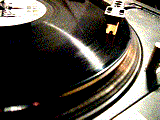- Posted by Al Sekela (A) on December 01, 2008 at 14:46:49
In Reply to: RE: Thanks Everyone!! posted by Dawnrazor on December 01, 2008 at 08:40:11
Hosfelt Electronics,
http://www.hosfelt.com/
has silver-mica caps cheap. The largest size they have now is 1980 pF in a 300-volt rating. I would avoid 100-volt caps for use with power amps. You can place five of these in parallel for 10,000 pF, or use a 50-ohm resistor with a single one instead of the 10-ohm value employed by Walker.
Newark lists the few Wima MP-3 caps they stock as direct-ship from their Farnell (UK) parent company with a $20 handling fee. This is in place of the usual UPS shipping charges, so it is not such a bad deal for a larger quantity. See
http://www.newark.com/jsp/search/browse.jsp?N=500003+1000115&Ntk=gensearch_001&Ntt=Wima+MP3&Ntx=
Mouser also sells some and is based in the USA. Their price per unit is higher, but the shipping charges would be lower for a small quantity. Please disregard the "Polypropylene film capacitor" text in the table: the MP3 is the metallized paper type.
http://www.mouser.com/Search/Refine.aspx?N=254271&Keyword=Wima+MP3
Keep in mind that you may get better performance with higher resistance values. The Walker recipe seems to have been designed to suppress amplifier oscillations. The resistance is too low to suppress capacitor resonances, but I don't know how important this would be in a speaker circuit application.
Sonic Craft sells a good selection of half-watt PRP resistors. This is the only type I would use. See
http://www.soniccraft.com/products/resistors/prp/0_50watt.htm
Follow Ups:
- RE: Yes, it matters. - Dawnrazor 19:33:01 12/01/08
(3)
- In Reply to: RE: Yes, it matters. posted by Al Sekela on December 01, 2008 at 14:46:49
Awesome Al,
Thanks for the great info and I should have some time to do this by the end of the year.
Do I need to double the recipe and put them on both drivers?? or just the tweets?
- Try them at each end of each cable. - Al Sekela 16:35:09 12/02/08
(0)
- In Reply to: RE: Yes, it matters. posted by Dawnrazor on December 01, 2008 at 19:33:01
The R-C networks damp the normal-mode resonances of the cables, but don't do much for the common-mode resonances. This might be part of the reason why Cory M. had trouble with them on his Hurricane amps.
I found they helped at the amp ends as well as the speaker ends of the cables. A friend tried this and found they helped at the speaker ends but not the amp ends. It seems that each setup is different and will benefit differently (or not at all).
- Both drivers. - Cory M. 11:41:38 12/02/08
(1)
- In Reply to: RE: Yes, it matters. posted by Dawnrazor on December 01, 2008 at 19:33:01
I'd definitely do each set of speaker cables that feed your system. The parts are cheap enough anyway, and you can always pull them out if you don't think they have an effect. It isn't so much just a problem with the high frequency drivers, it is pertinent to the whole system.
Al has done much experimenting it seems, and he has tracked down the best parts that work for this. That's how I originally got the idea to make mine, so his advice is best on this matter. One thing I will say though is that somehow the "links" did not agree with my ASL Hurricanes. I had a problem with "shoutieness" and tracked the problem down to here. Removed them, and all was fine and dandy. The links worked well with my other amp, and improved things. I will have to do some fine tuning with values here I suppose, maybe it is loading in the audio band.
I'm not using the links I have right now, if you would like, I'll throw them in an envelope and send them for you to try.
Cory
Edits: 12/02/08
- Sorry for the delay - Dawnrazor 20:06:18 12/07/08
(0)
- In Reply to: RE: Both drivers. posted by Cory M. on December 02, 2008 at 11:41:38
Hey Cory,
That is a great offer on your part.
I normally don't accept such things and like to do it myself. BUT many years ago, Powermatic made me a kind offer to send some aluminum tracks to stiffen up my speakers and I didn't take advantage of that and well sliced my mdf frames up something silly to make the too small ones I had bought work.
So YES, I would like to accept your kind offer.
Can you e-mail me at dawnrazor (dot) age@comcast (dot) net?
THANKS.
- Sorry for the delay - Dawnrazor 20:06:18 12/07/08
(0)
- Try them at each end of each cable. - Al Sekela 16:35:09 12/02/08
(0)
Post a Followup:
| FAQ |
Post a Message! |
Forgot Password? |
|
||||||||||||||
|
||||||||||||||
-
To view your new posting or follow-up, click on the RELOAD or REFRESH button on your browser.
This post is made possible by the generous support of people like you and our sponsors: